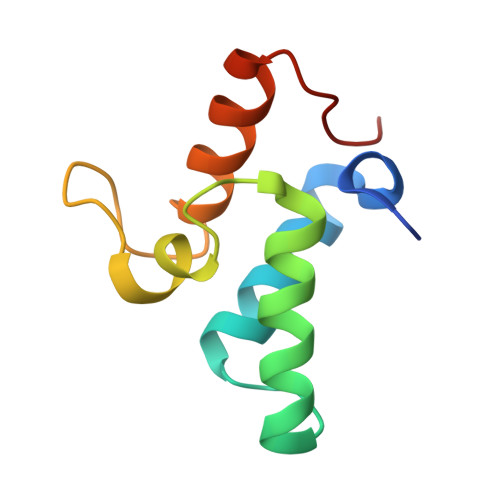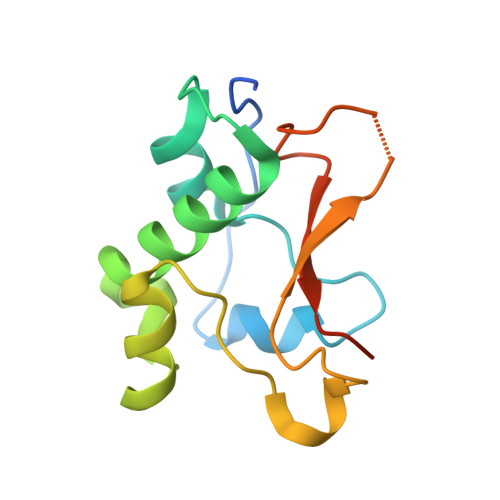The Structural and Energetic Basis for High Selectivity in a High-Affinity Protein-Protein Interaction.
Meenan, N.A., Sharma, A., Fleishman, S.J., Macdonald, C.J., Morel, B., Boetzel, R., Moore, G.R., Baker, D., Kleanthous, C.(2010) Proc Natl Acad Sci U S A 107: 10080
- PubMed: 20479265
- DOI: https://doi.org/10.1073/pnas.0910756107
- Primary Citation of Related Structures:
2WPT - PubMed Abstract:
High-affinity, high-selectivity protein-protein interactions that are critical for cell survival present an evolutionary paradox: How does selectivity evolve when acquired mutations risk a lethal loss of high-affinity binding? A detailed understanding of selectivity in such complexes requires structural information on weak, noncognate complexes which can be difficult to obtain due to their transient and dynamic nature. Using NMR-based docking as a guide, we deployed a disulfide-trapping strategy on a noncognate complex between the colicin E9 endonuclease (E9 DNase) and immunity protein 2 (Im2), which is seven orders of magnitude weaker binding than the cognate femtomolar E9 DNase-Im9 interaction. The 1.77 A crystal structure of the E9 DNase-Im2 complex reveals an entirely noncovalent interface where the intersubunit disulfide merely supports the crystal lattice. In combination with computational alanine scanning of interfacial residues, the structure reveals that the driving force for binding is so strong that a severely unfavorable specificity contact is tolerated at the interface and as a result the complex becomes weakened through "frustration." As well as rationalizing past mutational and thermodynamic data, comparing our noncognate structure with previous cognate complexes highlights the importance of loop regions in developing selectivity and accentuates the multiple roles of buried water molecules that stabilize, ameliorate, or aggravate interfacial contacts. The study provides direct support for dual-recognition in colicin DNase-Im protein complexes and shows that weakened noncognate complexes are primed for high-affinity binding, which can be achieved by economical mutation of a limited number of residues at the interface.
Organizational Affiliation:
Department of Biology, P.O. Box 373, University of York, York, YO10 5YW, United Kingdom.

















